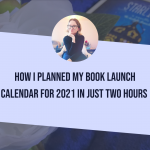Have you ever felt like you were on a roller-coaster while reading a book? Not the exciting kind either—the rattly, gut wrenching kind that makes you wonder if it’s about to break down in mid air and send you hurtling to your death?
(Not to be morbid or anything.)
Well, that’s the same kind of feeling someone might get if your story has poor pacing. I’ve spoken about pacing before, but today I wanted to go into more depth about how to improve story pacing. It’s one of the most crucial aspects of story writing because it ties into so many other things, like description, atmosphere, and characterisation and flow.
But before we go into how to fix it, let’s recap on what exactly pacing is:
“Pacing is the speed of which your story progresses.”
To make it even clearer for you, a story that progresses too fast will confuse the reader— due to inconsistencies, jumpy prose flow, and rushed storytelling.
On the other hand, a story that progresses too slowly means there is too much backstory and description weighing the plot down— resulting in your point getting lost in translation and bored readers.
I would even go as far as to say that pacing is the foundation of your entire story— in terms of framework. For example, imagine your story is a house. The actual story idea is the theme of the house (e.g. Victorian, Colonial, Contemporary, etc.), while the framework is how the house gets built. Without a solid foundation and interior support beams, we can’t build walls or add plumbing or even paint the house. (Side note: I’m no building expert— just roll with it).
My point is… pacing lays the foundation for everything. So by being mindful of how you want to write other aspects of your story, you’re being mindful as to how you pace your story.
1) Description
The first pacing mistake that sticks out to me like a sore thumb (and is also the most common newbie writing mistake I come across) is description—either too much of it or not enough of it. In most cases, the latter.
When writing, you want to keep in mind that the reader has a short attention span and they want to get to the point as quickly as possible. That’s not to say that we should deprive them of setting the scene though. We need to make sure the reader can visualize everything that we are seeing in our heads—so long as it’s relevant and helps them to understand the story.
For example, if the story takes place on a camping trip in the woods, you can set the scene by describing the scent of the trees (even better if you can say what kind of trees they are), the smoke from the campfire, the tents and some classic camping equipment. But you don’t want to go overboard and describe the dirt track and beds of pine needles and mountain ranges surrounding them and blue skies every day. Just keep it simple—sprinkle it throughout the story rather than dumping it in one spot.
You also want to make sure everything is described to a tee— leaving out important details such as ‘the sound of him approaching’ or ‘the blade cut into my skin’ can create holes and confusion for the reader— a character might suddenly appear without any context, or a character might be unharmed one minute and suddenly bleeding the next. This creates poor, jumpy pacing.
Grab My 4-Step Story Starter Worksheet
Discover my simplified process for getting loose ideas onto paper and finally starting your fiction novel.
2) Backstory
Backstory is a great way to make sure your scenes have better pacing—instead of spilling the beans about your character’s life in the first few paragraphs, you’ll be able to craft better questions for the plot and, in turn, lead the reader through a story that intrigues them and slowly feeds them information.
To give you an example, if your character is starting at a new school, you might be tempted to explain why and how in the first chapter (e.g. I moved from City A to City B to live with my grandmother because my parents died in a terrible car accident. They were acting strange that day which leads me to believe it wasn’t an accident, so I’m going to get to the bottom of it.)
Instead, you might leave a couple of hints in the first chapter, for example:
- The grandmother might ask the main character how she’s holding up, but not mention the accident—which leads the reader to think that something has happened and gives them a reason to keep reading.
- Your main character might not mention that she’s starting at a new school until she turns up at the school for the first time and gets lost trying to find the office.
- Your main character might see an article or news story about her parents and cringe away from it. Her reaction could suggest that she’s angry and upset, which hints to the fact that she believes it wasn’t an accident.
As you move through chapters, you might make these plot points clearer—or even answer them completely, as you start to introduce new ones.
3) Atmosphere
Atmosphere is a big one— it’s how you set the tone of your story. In many instances, poor pacing leads to lack of tension or climatic buildup, which makes a story more enticing. So by combining the mystery aspect of a story (backstory) and setting the scene correctly (description), you will be able to effectively pull off atmosphere—which will improve the overall feel of how the story is progressing.
If a reader feels sucked into the story, and feels that it is building up to something scary or exciting, or even gut wrenching, you know you’ve done the pacing right.
I hope these pacing tips helped you! Now go forth and write your best story yet!
You May Also Like:
Three Ways To Improve Your Writing Vocabulary

Written by Pagan Malcolm
Pagan is a copywriter and business coach helping writers understand the business side of publishing so that they can become serious authors.
| Facebook Group | Instagram | Podcast | Website | Blog |


